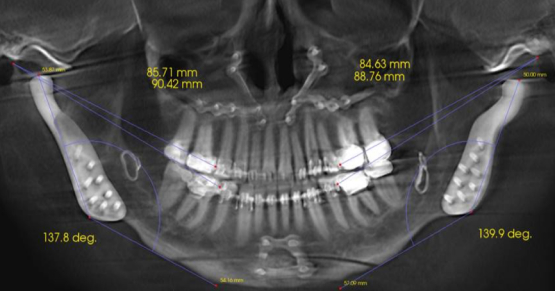How to Give a Painless Injection
At a continuing education seminar, I once heard someone say, “Patients only know three things: Did it hurt? Does it look good? Did they treat me nicely?” There is undoubtedly some truth to this. Patients don’t understand if your margins are impeccable or if you have put them in the most stable occlusal scheme possible. But if you make them jump when you give them an injection, they sure as heck remember that.
So what can we do to help ease one of the most unpleasant parts of our practice?
Topical anesthetics
It’s essential to address the topical. I would use two topical anesthetics. The first is Profound from Steven’s Pharmaceutical. It’s a mixture of 10% prilocaine, 10% lidocaine, and 4% tetracaine. It comes in both a regular and a light. The regular is very viscous, and the light is runnier.
The second is The Best Topical Ever. It’s a mix of 10% lidocaine, 10% tetracaine, 2.5% prilocaine and 2% phenylephrine. Both of these topical anesthetics seem to work magic; however, making their magic work takes more than just swabbing some on.
Drying the gingiva before applying the topical is key to making it work. This removes the saliva and salivary proteins that can act as a barrier to the medications within the topical. Thoroughly dry the area with gauze and apply the topical. Let the topical sit for 30-60 seconds or until the tissue looks corrugated.
This lets you know the topical has penetrated the outer mucosa and affected the subepithelial nerve fibers. The needle can penetrate the tissue with little to no sensation. Giving the tissue a slight jiggle when inserting the needle distracts the patient and helps stimulate the nerves so they don’t register the needle poke.
There are devices, like the Vibrajet that aid you in shaking or jiggling the tissue, but personally I can do it myself. After giving the injection be sure to thoroughly rinse the tissue as the topical can cause some sloughing of the mucosa if left on too long.

Buffering anesthetics
It’s important to note that most of the pain from an injection does not come from the needle stick; it comes from the injection of the anesthetic into the underlying tissue.
The pH of anesthetic is very acidic. So realistically we are putting something akin to lemon juice under our patients’ skin and wondering why they jump when we do it. The real question is, what can we do to change it? The answer is to buffer your anesthetic with sodium bicarbonate.
By buffering anesthetics you can raise the pH to a more neutral level matching the natural pH of the human body. This takes some of the burning out of injecting the liquid subcutaneously. Now you can do this with a pre-packaged product like Onset from Onpharma, or you can do it yourself.
Onset has a dosage pen that allows you to dial in the amount of bicarbonate you will exchange for anesthetic from a standard anesthetic carpule. They currently only have recommendations for lidocaine, which is .18cc for a standard carpule. The downside to using Onset is the cost – it runs about five dollars per injection.
If you do the buffering yourself, you’ll need Luer Lock draw syringes, needles, and a sodium bicarbonate solution. The process involves drawing out an anesthetic and replacing it with the same amount of sodium bicarbonate. It’s a hassle, but it will save you a few dollars per injection, and when you do as many as we do, that can add up fast.
However, just buffering the solution will not completely take the burn out of an injection. The other cause of the burning sensation is the buildup of fluid under the surface of the tissue.
If you inject too quickly the tissue cannot adapt to the amount of fluid and it causes the tissue to lyse. This causes damage to the tissue and pain to the patient. It’s also why patients will have more post-op discomfort in the injection site.
The easiest way to prevent this from happening is to inject slowly. There are a number of computerized devices that aid in slowing the injection process. They force us to slow down and gently administer the anesthetic. It can be done without the aid of a device, but it takes patience.

Palatal injections
The palatal injection is one of the more difficult processes. No one likes giving them, and patients sure don’t like getting them; it’s a necessary evil. So how do we make them as comfortable as possible?
Topical anesthetics don’t work very well due to the thicker keratinized tissue on the palate. So to get the tissue to not respond to the initial stick of the needle there are a couple of tricks.
A quick application of ice will numb the surface allowing the needle to enter with little to no pain. You can use endo ice for this, but make sure to be careful not to get it so cold that it causes tissue damage.
Once the tissue is numb from the ice and the needle is in place, gently squeeze out one to two drops of anesthetic. You should give the anesthetic enough time to soak in. This will anesthetize the area and allow you to administer more local anesthesia without pain. If you rush this step, your patient’s tissue won’t be numb, and when you inject, it will be painful because of the amount of pressure you’ll need to apply.
The palatal tissue is tight to the underlying bone and has very little room for anesthetic. You’ll have to place some mild anesthetic in the area before trying to pump in more.
The other technique takes a little more time but is very effective — especially with very anxious patient or children. First, you start with an infiltration. Allow the anesthetic to take effect for a minute or so, giving enough time for the soft tissue on the buccal to become numb. Once this has occurred, administer a small amount of local anesthetic to the facial papillae.
Apply enough pressure to start seeing the tissue change on the palatal papillae. This will cause them to become anesthetized. Once this has occurred, you can slowly creep your way from the papillae to the palatal tissue, administering more local anesthesia.
I have used both techniques and prefer the ice technique most of the time. It has promising results without taking too long to administer and limits the number of needle insertions necessary. The papillae technique is excellent when you need a lot of anesthetic or hemostasis, since epinephrine is placed directly in the soft tissue in numerous areas.
Difficult patients
We all have “difficult” patients in our schedule. They’re not bad patients; they’re just hard to get numb and we feel bad that we can’t figure out a way to get them comfortable.
You know the kind of patient I’m talking about. You can give them enough anesthetic that their toes are numb but as soon as you touch the tooth, you have to peel them off the ceiling. So what can we do to make these hard to numb patients comfortable?
First, let’s look at smokers. This one is easy; ask them not to smoke for two to three hours before their appointment. Nothing guarantees a bad appointment more than a smoker having a cigarette right before. I have listed in my pretreatment brochure not to smoke since it can interfere with the efficacy of the anesthetic.
I’ve had a number of patients that couldn’t get anesthetized due to smoking. After I reappointed them and explained for them not to smoke, they were able to get comfortable after one shot. Smoking changes the liver enzymes and increases blood flow which causes faster metabolism of the anesthetic.
Now, what about the ones who don’t have a discernible cause of anesthetic resistance? I mentioned buffering earlier about taking the burn out of the injection. One other benefit of buffering is a faster and stronger onset of anesthesia. This property helps with hyperemic teeth and infected sites. The buffering helps disassociate the anesthetic ions faster, allowing for faster onset and more profound anesthesia.
Have you ever heard of the x-tip? This little beauty is awesome for getting fast profound anesthesia. It is an intra-osseous injection system. It contains two components: a drill for the slow speed hand piece used to create a hole in the cortical plate, and a very short needle to fit into the hole.
The process starts with numbing the soft tissue with a small amount of local anesthetic, then taking the drill slowly and making a pathway approximately 2-3 mm below the papillae in the attached gingiva next to the tooth you want to anesthetize. The drill is specially designed to leave a guide device in the bone to aid in correctly getting the needle oriented for administering the anesthetic. The needle is then slid through the guide path, and an anesthetic is administered; onset is rapid and profound.
Maxillary teeth usually respond to one of the techniques above, but mandibular teeth are different. So what happens when none of this works on a mandibular tooth? Now you have to bring out the big guns. This is where the Gaw-Gates injection comes into play. This is a standby for me when doing long or very involved surgical procedures.
I’ll use two different anesthetics when trying to get the difficult patient numb. I start with 3% mepivicaine without epi, followed by 2% lidocaine with 1:200000 or 1:100000 epi. mepivicaine acts faster and has a larger distribution area due to the lack of epinephrine. This gets the patient anesthetized quickly, allowing me to start, but lasts long enough to overlap with the onset of the lidocaine.
FOUNDATIONS MEMBERSHIP
New Dentist?
This Program Is Just for You!
Spear’s Foundations membership is specifically for dentists in their first 0–5 years of practice. For less than you charge for one crown, get a full year of training that applies to your daily work, including guidance from trusted faculty and support from a community of peers — all for only $599 a year.

By: Abigail Pfeiffer
Date: January 17, 2017
Featured Digest articles
Insights and advice from Spear Faculty and industry experts



